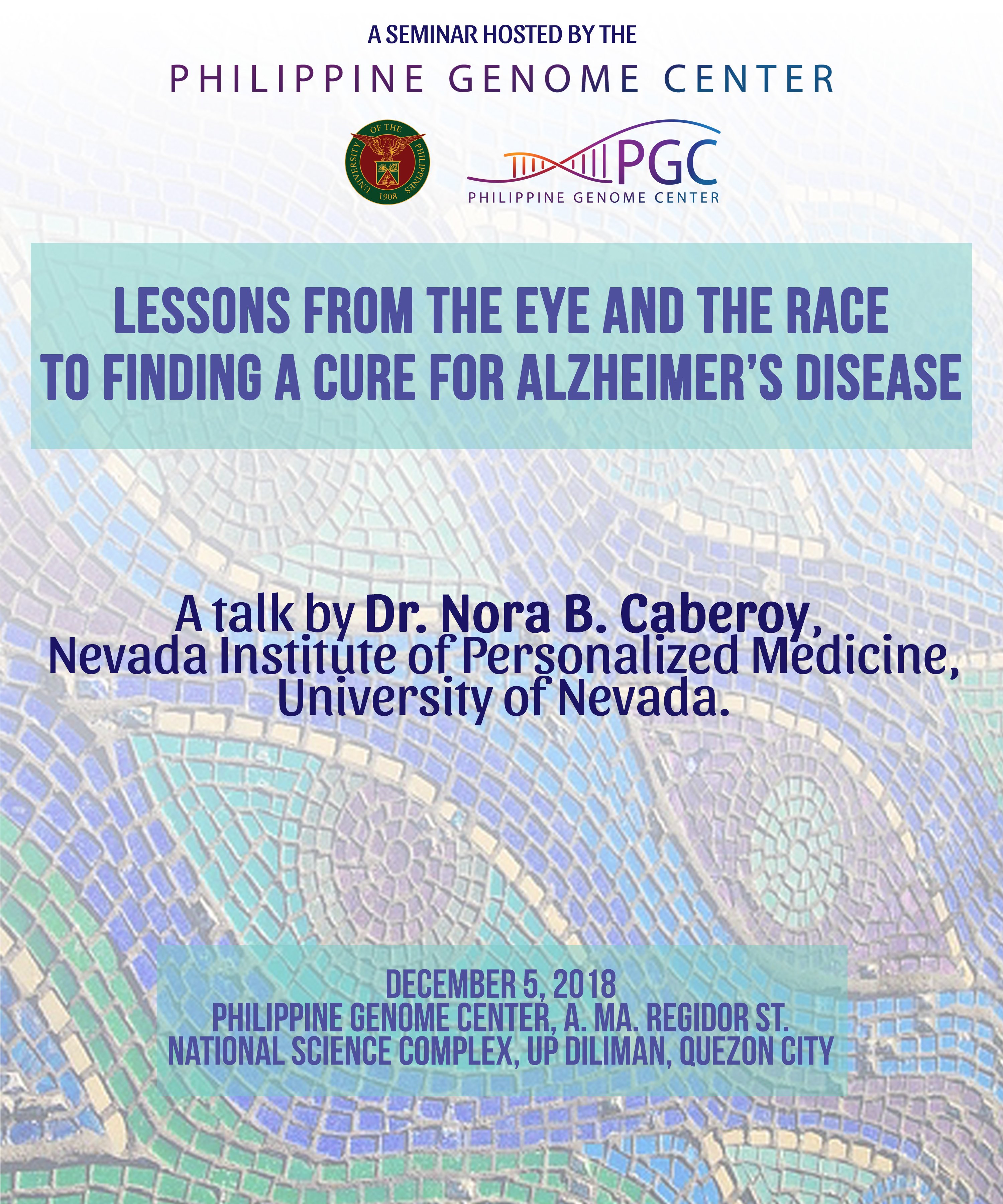
Date: Wednesday, 05 December 2018, 10:00 am (Manila Time)
Abstract
Photoreceptors are cells responsible for reception and processing of light and sending the signal to the brain. When old bits of cellular debris accumulate around the ends of photoreceptors, these are removed by specialized cells in the retina with the help of certain proteins to guide the process. My laboratory studies a protein called TUB, that can bind onto cellular debris while inviting another type of cells, the phagocytes, to begin clearing them. TUB serves, as a bridge between the cells that need to be consumed and those that are supposed to eat them. This process of removal of damaged cells in the eye is considered “silent” because it is known to not cause an inflammatory response.
So, what does all this have to do with Alzheimer’s disease? Patients with Alzheimer’s have an accumulation of amyloid beta, a protein that aggregates in the brain. Amyloid betas are normally cleared by specialized cells called microglia. However, removal of these aggregates leads to activation of the inflammatory pathway that causes the death of the brain cells. Using genetic engineering, we have repurposed TUB in creating a new type of “molecular bridge”: a hybrid protein designed to capture amyloid beta on one end and to bind to microglial silent receptor on the other end. This “snatches” harmful amyloid beta and “re-channels” them to an alternative degradation route that could reduce the production of inflammatory factors. My talk will highlight our recent findings and their implications in the development of therapy for Alzheimer’s disease.

Nora B. Caberoy, PhD
Lincy Associate Professor, School of Life Sciences | Affiliate Faculty, Nevada Institute of Personalized Medicine, University of Nevada Las Vegas
About the Speaker
My current research focuses on two areas of diseases: retinal degeneration and obesity. For retinal degeneration, I study the role of retinal pigment epithelium (RPE) cell phagocytosis in photoreceptor death that leads to retinal dysfunction. For obesity, I explore the physiological and pathological roles of tubby in the development of obesity. I use multidisciplinary approaches that include animal models, molecular, cellular, genetic, biochemical and functional proteomics by phage display in combination with next generation DNA sequencing (NGS) technology to investigate the above diseases…read more
The seminar will be held at the PGC bldg. LGF
